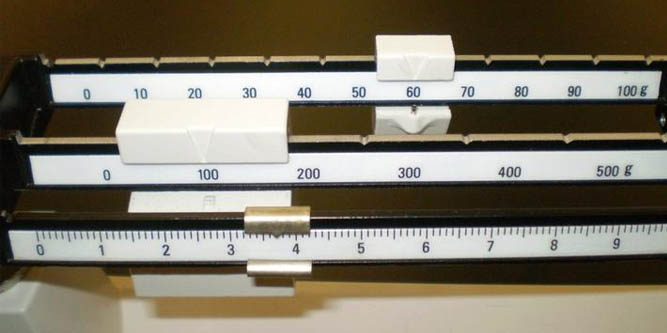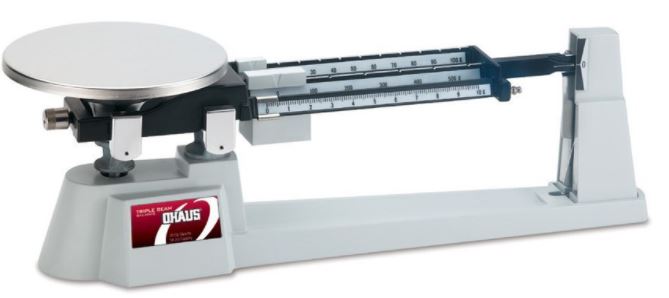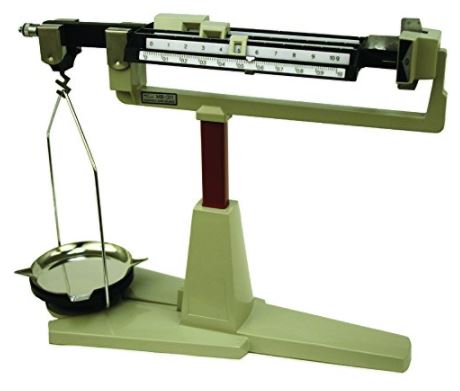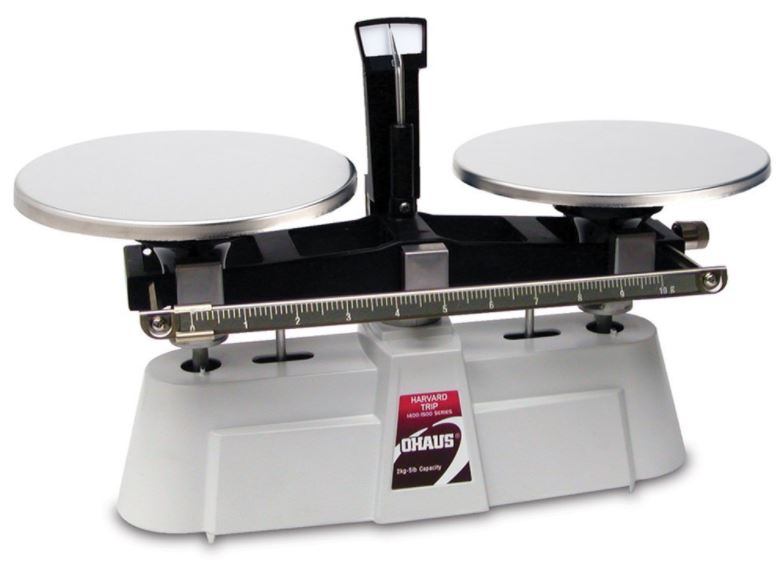When you’re taking measurements, sometimes the right tool for the job isn’t digital, it’s mechanical. Obviously, there’s a huge number of advantages with a digital balance. Microprocessors can provide stunning accuracy, counting functions, memory functions, and more. But for every digital advantage you can list, you can find just as many for a mechanical balance.
The last place you want your expensive electronic instruments is outside of the lab and working in uncertain terrain. Mechanical scales are a robust alternative for people who aren’t always in the most stable conditions. Mechanical scales are also much easier to use because you don’t have to worry about navigating the menu of some device. Even better, you’ll never have to worry about replacing batteries or dealing with power outlets at all.
Digital scales use electronic load cells that are as costly as they are accurate, but mechanical balances use inexpensive mechanical parts like springs. That means relative to digital scales, mechanical scales are inexpensive because you don’t have to pay for electronic guts. In short, mechanical balances offer ease of use, a long lifespan, and a high degree of portability.
Choosing the Right Mechanical Balance
You can find a huge range of mechanical balances on the market, each suited to a different set of tasks. You’ll find hanging pan balances, handheld force gauges, single beam balances, and more. But choosing the right tool for your tasks demands you have a clear idea of exactly it is you want to measure.
For a general purpose solution, the best alternative to an ordinary digital balance is a triple beam balance. These are the types of balances you may have seen at use in a doctor’s office, where the device calculates mass by pushing three beams down a mechanical slide. And between different triple beam mechanical balances, you’ll find poises with drastically different weight capacity.
For comparing the mass of two objects, a triple beam balance isn’t going to get you very far. But a single beam balance is extremely well suited to that task. Alternatively, a hanging pan balance can provide high precision thanks to the consistent force of gravity it uses to take measurements.
Calibration
No scales will stay accurate forever; calibration is inevitable to check your scale against a known standard. For mechanical balances, that means using calibration weights to determine if your balance has strayed off base. Some mechanical balances include calibration weight sets; other times you’re left to purchase aftermarket calibration weights.
There are six classes of accuracy for calibration weights. For the purposes of a standard mechanical balance, there’s no reason to go higher than class M weights, which are rated for an average degree of precision. Higher accuracy weights are useful for calibrating scales which are accurate to thousandths of a gram, but are a waste of money on most mechanical balances.
How often you’ll have to calibrate your device varies from one mechanical balance to another. In most cases, the manufacturer will specifically list a recalibration schedule you’ll want to consider. If they don’t, recalibrating at least annually is a good idea for a scale that sees regular use.
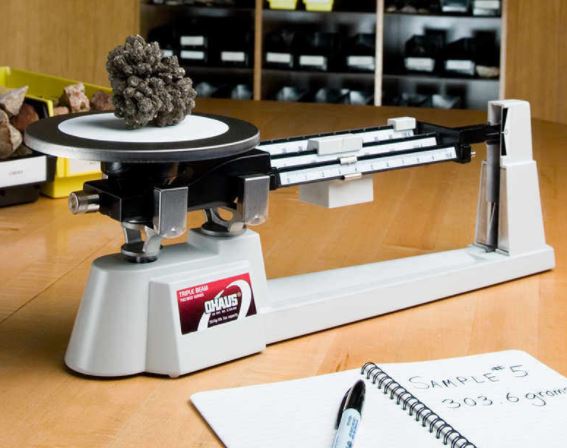
Capacity and Readability
What are the largest and smallest sizes you’ll want to measure? The readability of the device describes the smallest divisions readable on the scale. Some scales have readability to 0.1 grams, others to 0.00001 grams. Strong readability for mechanical scales is usually in the neighborhood of 0.1 grams.
Because there’s no LCD display to give you your measurement results, the accuracy of your readings is tied to the accuracy of your eyesight. For that reason, some mechanical balances can actually be far more readable than they claim. With strong vision and a decent magnifying glass, excellent mechanical balances which claim to be readable to 0.1-grams may actually be readable to 0.01 grams or better.
Size and Build
Mechanical balances are constructed in a variety of sizes and shapes. To select the right one for your individual needs, you’ll want to think about the counter space you have available. Most scales are lengthy or tall, which can strain cramped workspaces. You’ll also want to look at the general durability of the design. Stainless steel parts are built to last, which is important for any part of the balance that will see repeated contact during measurement.
Accuracy and Precision
When you’re dealing with measuring equipment, accuracy is always going to be a concern. Accuracy is an indication of how close your scale gets to the actual value you’re trying to measure. Inaccurate scales don’t necessarily have to be inaccurate all the time, but tend to give more inaccurate readings.
Precision doesn’t mean accuracy – it means it gives the same reading repeatedly for measurement after measurement. Having both accuracy and precision is important for a highly functional scale. Additionally, the measurements you take should offer enough sensitivity discrimination for the tasks you have in mind.
In other words, your measurements shouldn’t bounce around wildly as you add weight or remove weight from the platform. They shouldn’t be vulnerable to errors if make an off-center load on the balance, or crowd items around the edges of the weighing platform. And you don’t want to have more accuracy than you need because you pay for every bit you end up with.
Ohaus Specialty Mechanical Triple Beam Balance
Ohaus manufactures scales for a huge variety of industries. From jewelry stores and food service, to medical laboratories and retail establishments, Ohaus scales can be found anywhere there’s something to measure. In this mechanical triple beam balance, they’ve designed a relatively large 610g maximum capacity, and a modest 0.1-gram accuracy.
However, many people who use this specialty scale claim they’re able to achieve as much as 0.02g accuracy with nothing more than keen eyesight. Whether or not you need that extra readability, you can rest easy knowing there’s a reason that Ohaus is an industry standard among all who need scales.
Features and Build
On top of this balance, you’ll find a wide stainless steel loading platform that’s ready to take on an endless variety of tasks. Inside, there’s a spring-loaded zero adjust compensator to help you make tiny adjustments for truly accurate readings. And along the poise of the device, Ohaus makes use of magnetic damping to help speed up your measurements. Magnetic dampening allows the adjustable beams to quickly come to a firm rest without accuracy or sensitivity being negatively affected.
Ohaus’ smartly designed this scale with an accessible build that won’t obstruct placement for your measuring samples. Above all, that means that ease of use is simple. Mechanical balances have a number of moving parts, so there’s never a guarantee that using them will be easy or intuitive. But Ohaus ensures that after only one glance at their mechanical balance, you can start taking accurate measurements.
Other Considerations
As an industry leader, Ohaus guarantees their scale was manufactured to ISO 9001:2000 standards. If you’re not familiar with weighing equipment, you should know the ISO is an internationally recognized quality management system. As far as build size goes, this could be described as full-sized mechanical balance. It’s approximately 12-inches wide and 9-inches tall, so you’ll have to set aside a fair amount of counter space to find it a home.
Walter Products B-500-O Hanging Pan Balance
The B-500-O is an economy hanging pan balance. It uses a three-point base that’s been constructed of a durable metal casing, and a smart design that’s easy to use. Some people will be wary that Walter Products manufactured the B-500-O in China. And while it’s true that much of the measuring equipment coming out of China isn’t adequate to say the least, the B-500-O is a shining exception to the trend. Relative to its price and performance, this hanging pan balance holds up to scrutiny.
Features and Build
The B-500-O has a relatively small 311-gram capacity with a 0.01g readability. The build quality is sturdy and ready for years of use, largely thanks to the stainless steel removable pan. Conveniently placed near the back end of the balance, you’ll find a zeroing adjustment knob you can use to zero the device. And the B-500-O uses industry standard magnetic dampening, for smooth and precise control over your measurements.
Those features also help ensure that ease of use matches the quality of the build. For taking measurements, you should know the fourth beam is 200 x 100g, the third beam is 100 x 10g, the second beam is 10 x 1g, and the front beam is 1 x 0.01g. All you have to do is slide each beam to center, from largest to least, and you can quickly find the mass you’re looking for.
Other Considerations
Unfortunately, the measuring arm of the B-500-O is somewhat loose. But that’s the kind of minor weakness you’ll almost unavoidably find among inexpensive mechanical scales. Equally unfortunate, the aesthetic of this balance is either a dull cream color, or an equally unappealing pea-soup green. If you can put those things aside, in terms of price per performance, the B-500-O is an exceptionally strong option. Plus, Walter Products includes a five-year warranty for their scale.
Ohaus Harvard Trip Mechanical Single Beam Balance
Ohaus’ Harvard is a single beam balance using the Roberval balance design, which was invented by a French mathematician more than three centuries ago. This two-pan design allows the balance to determine differences in mass, as opposed to determining an absolute value between a set of objects. The Harvard is equipped with sliding masses that are built-in, and is a full demonstration of the reason why Ohaus balances are widely known for their durability and accuracy.
Features and Build
The Harvard has a maximum weight capacity of 2,000g, which is quite considerable. However, you’ll have to fit that weight within the 6” pan. Measurements are easily readable to 0.1g, but keen eyesight could easily bring that accurately to within 0.01g. In short, this device was clearly made to take on larger quantities.
It’s equally clear that the goal of the Ohaus Harvard Trip is to provide a high precision instrument that requires very little maintenance. In the interests of a precise reading and fewer operation errors, you’ll appreciate the angled beams and measuring pointer are clear and large. Along the bottom of the balance, you’ll find a counterbalancing knob for rapid zeroing of the scale. And as you would expect from Ohaus, this balance makes use of magnetic damping to help guarantee accurate and smooth adjustments.
Other Considerations
The Harvard Trip has a bulky 25 x 22 x 18-inch body, and weighs about four pounds. That large build allows the device to be equal parts rugged and fairly versatile. The metal base and beam are paired with a stainless steel pan, and hardened steel edges which ensure lasting lifespan. As far as a reasonably priced single beam balance goes, there’s no doubt that this is the best you can do.
Choosing Between 3 Mechanical Balances
For an inexpensive, tested and proven hanging pan balance, you want the Walter Products B-500-O. It has a modest 311g capacity that’s suitable to hanging pan design, a sturdy construction, and a competitive price relative to its build. While the Chinese construction will make some people wary, the five-year warranty provides a good reason to take a leap of faith.
If you’re looking for a single beam balance, then you want the Ohaus Stainless Steel Harvard. It has sturdy construction that’s designed to last for years. The considerable 2000-gram capacity makes this scale clearly designed for larger loads, but not at the cost of any accuracy or precision. In short, the Harvard is a great choice if you need accuracy and precision when taking larger measurements.
But for a triple beam balance, you want the Ohaus Specialty Mechanical Triple Beam Balance. It makes use of the same study construction materials and design you get from any Ohaus product, which ensures you’re going to be happy with the performance of the balance. And the ubiquitous triple beam design is versatile enough to measure most things, making this scale the obvious choice for anyone who doesn’t have highly specific measuring tasks in mind.
Meet Ry, “TechGuru,” a 36-year-old technology enthusiast with a deep passion for tech innovations. With extensive experience, he specializes in gaming hardware and software, and has expertise in gadgets, custom PCs, and audio.
Besides writing about tech and reviewing new products, he enjoys traveling, hiking, and photography. Committed to keeping up with the latest industry trends, he aims to guide readers in making informed tech decisions.

